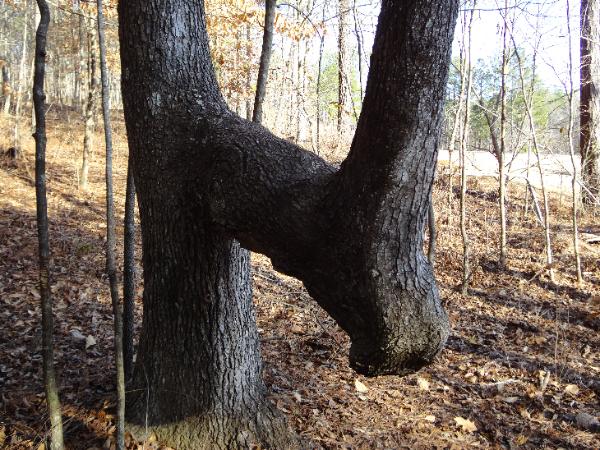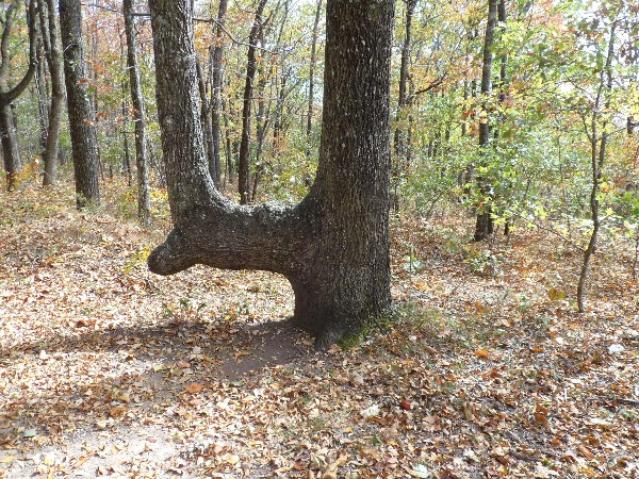If You See A Bent Tree In The Forest, Start Looking Around Immediately



I can hardly imagine hitting the road these days without a GPS… and that’s largely because we let technology take over so much of our daily lives. It’s no surprise that researchers have even managed to connect the human brain to the internet recently—it seems like there’s hardly anything left that technology can’t touch.
Maps are still incredibly useful, of course, but it makes you wonder: what did people do before GPS or even detailed maps existed? How did travelers, explorers, or wanderers find their way through dense forests or rugged terrain without the aid of modern technology? Surprisingly, nature itself held hidden guides, and some of these secrets are connected to bent trees.
According to the National American Forests website:
Across the United States, you can discover trees that grow in unusual shapes, with trunks that twist, bend, or lean at odd angles. While some of these shapes may simply be natural quirks, many were intentionally created by Native Americans as navigational aids. Indigenous people would carefully bend young trees to mark trails, indicate safe paths through challenging landscapes, or point travelers toward essential resources like water, food, or important landmarks. Over time, these trees matured while keeping their original shapes, but their purpose was largely forgotten as modern development spread across the country. Today, we may not need these “trail trees” to find our way, yet they remain priceless reminders of history. Imagine the stories these silent sentinels could tell.
Indeed, while it’s true that many bent or oddly shaped trees occur naturally, Native Americans developed a method that made their trees distinguishable. Lost travelers could recognize these deliberate markers from the ones shaped by nature itself.
For example, many forest trees appear naturally bent, like the one pictured above. But decades—or even centuries—ago, the trees intentionally bent by Native Americans had distinctive “noses” or notches at the ends of their bends. These were created by inserting a piece of wood or a wedge into the tree when it was young and allowing it to grow around it, forming a permanent directional guide.
Beyond the “nose,” there is another small detail that helps distinguish human-made trail trees from natural ones. If you examine the upper inner curve of the tree, you might notice scars left by straps or bindings used during its early growth. These subtle marks tell the story of a living guide carefully shaped to serve future generations.
Many of these trees are now 150–200 years old, standing as testaments to human ingenuity and a deep connection with nature. Yet, as we continue to expand cities, roads, and logging operations, these trees face threats from timbering and urban development. Preserving them is a challenge—but also a vital way to protect a living piece of history.
This is exactly why the Mountain Stewards website was created. The organization has mapped over 1,000 bent trees across the United States, documenting their precise locations to ensure that people can find and appreciate them. Their goal is to inspire both young and old to experience these remarkable historical markers before they vanish entirely.
Check out this incredible video of a real-life bent tree in Georgia—it’s a fascinating glimpse into a hidden chapter of American history!
News in the same category

Ever Wake Up But Can’t Move

Are Eggs with Bl00d Spots Safe to Eat? The Truth Behind Those Tiny Red Specks

You’ll Think Twice About Soft Serve

A 42-Year-Old Man Died of a Stroke Despite Not Smoking or Drinking — Doctors Shocked to Find the Real Daily “Killer” in His Diet

How to Remove Water Stains from Wood with Mayonnaise

Close or open the bathroom door for ventilation? It turns out many people still do it wrong

What Does It Mean To Wear a Ring On The Right Hand

Who Will Not Be Eligible As Trump Promises To Give $2,000 To Almost Everyone In America

I Thought I Found Insect Eggs Under My Bed

The Lip Color You Pick Reveals What Kind of Woman You Are

Don’t Toss That Tuna Can

101-year-old woman who still works 6 times a week explains what she fears would happen if she retired

What the Inside of Your Car Might Say About You

This Simple Word Could Let Scammers Clone Your Voice with AI

Donald Trump ‘rattled’ as he’s booed at stadium he wants named after him

Here’s Why Many Couples Start Sleeping In Separate Beds After 50

Why Do We Get Shocked by Static Electricity

What Clearing the Table Says About You
News Post

Stem Cell Breakthrough Restores Natural Vision by Regenerating Damaged Corneas

Worried Pete Wicks’ surgery fears amid secret health condition he’s had for years

COVID-19 Infection Poses Far Greater Health Risks Than Vaccination – New Large-Scale Study Confirms

A Newly Discovered Protein Switch Could Transform Cancer Treatment

Inside Lee Mack’s marriage with rarely-seen wife Tara – from ‘friction’ at home to son who appeared on his BBC show
Angus T. Jones, Who Played Jake Harper, Left The Show “Two And A Half Men” 9 Years Ago – This Is Him Today
When Nighttime Leg Cramps Become a Concern
Nadya Suleman, A Mom Of Octuplets Celebrates Their 15th Birthday
Scientists Discovered A Sinkhole 630 Feet Underground In China Known As “Heavenly Pits”
Why Drivers Over 70 Face New Rules Nobody Saw Coming

7 tips to eliminate dangerous blood fat

Top 3 Foods to Prevent Leg Cramps in Seniors: Strengthen Your Legs Naturally!

Richard Gere reveals what he misses most after ditching the US for Europe

HBCU Prospects and Atlanta Culture Took Center Stage at MLB All-Star Weekend

Comedian Jeff Dye joins Hollywood exodus, says Newsom ‘scares the s–t out of me’

Worried Pete Wicks’ surgery fears amid secret health condition he’s had for years 'It is getting quite bad'

Prince William and Kate Middleton ‘reserved and formal’ during engagement interview

Woman Develops Liver Cancer from Eating Peanut Butter on Bread, a Common Habit Many People Share
